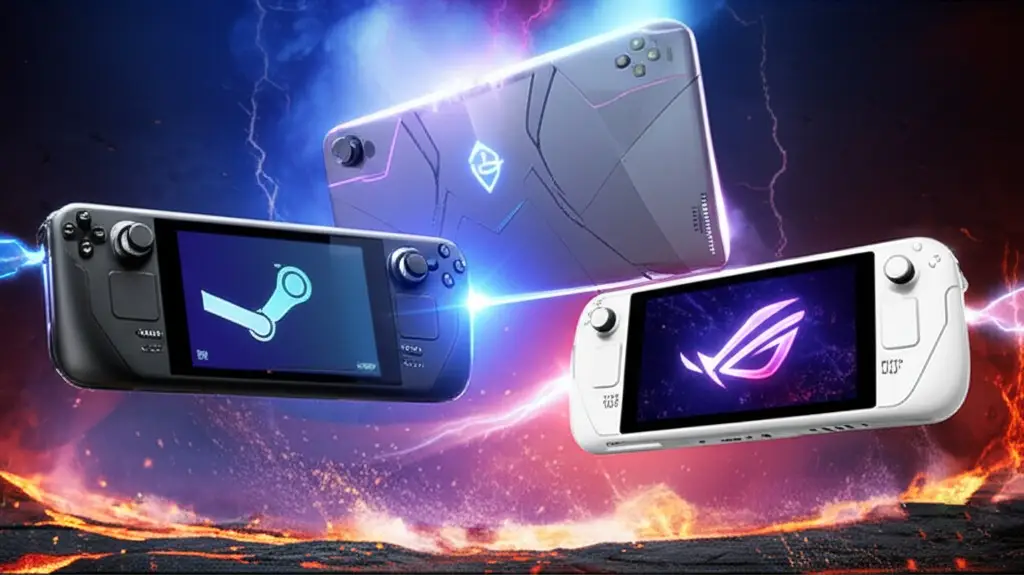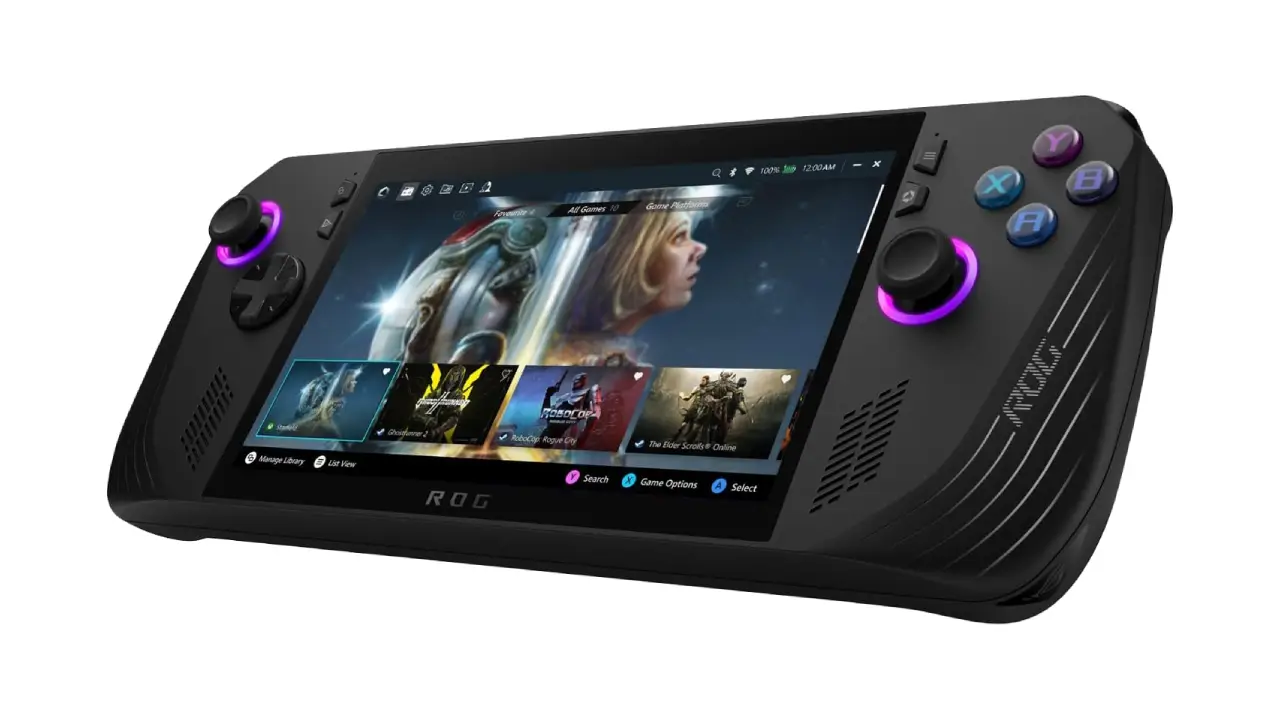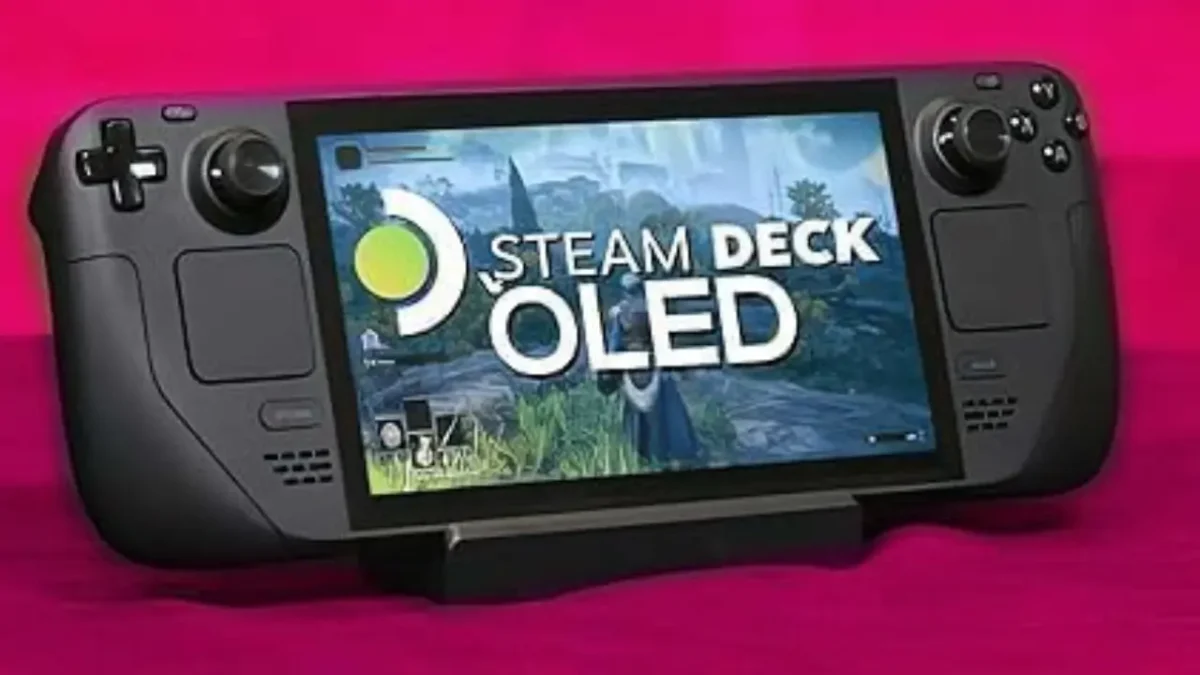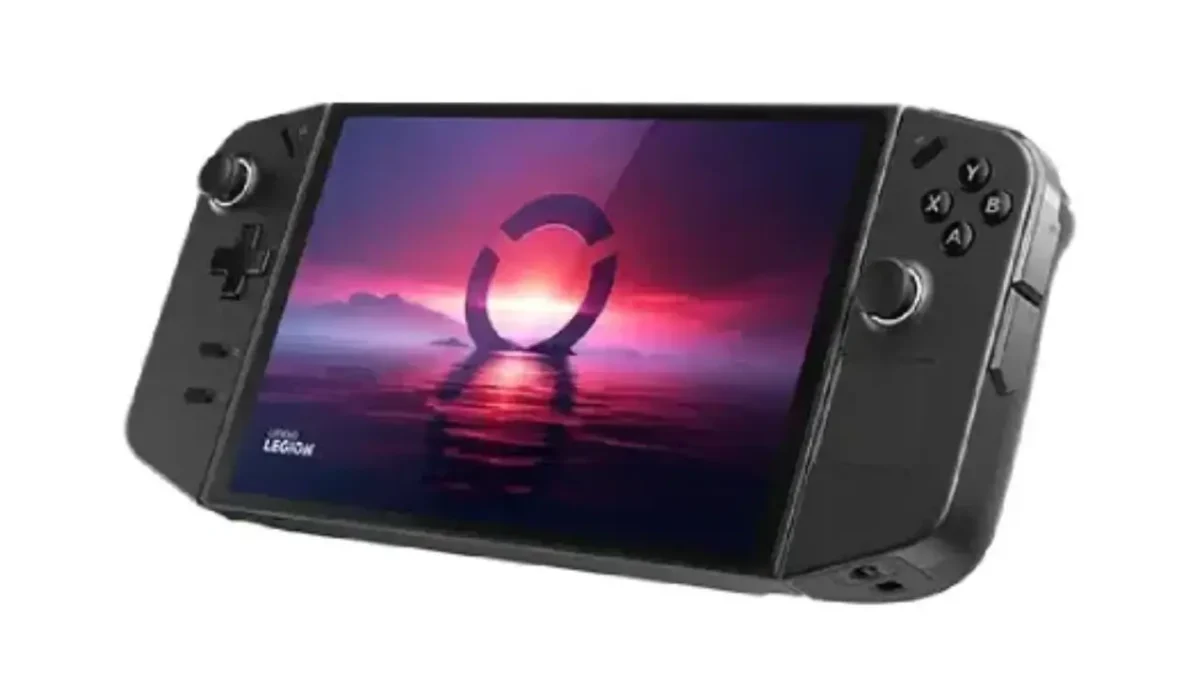Steam Deck vs. ROG Ally vs. Legion Go: The Definitive Handheld PC Comparison for 2025

The dream of playing your entire PC game library from anywhere is no longer a futuristic fantasy—it’s the reality of 2025. The handheld gaming PC market has exploded, led by three dominant forces: the pioneering Valve Steam Deck, the powerhouse ASUS ROG Ally, and the versatile Lenovo Legion Go.
Choosing between them can be daunting. You’re not just buying a gadget; you’re investing in an ecosystem and a specific gaming philosophy. This comprehensive guide will break down the critical differences in performance, display quality, ergonomics, and software to provide a clear, data-driven recommendation on which device reigns supreme for your needs.
At a Glance: Which Handheld PC is Best?
For those short on time, here is our top-level verdict, designed to give you a quick answer.

Valve Steam Deck (OLED)
For its seamless software, class-leading OLED display, and unmatched ergonomics, the Steam Deck provides the most refined and console-like experience out of the box. See more…

ASUS ROG Ally (Z1 Extreme)
If maximum frame rates and the power to run any Windows-based game or launcher is your priority, the Ally’s Z1 Extreme chip and 120Hz VRR screen are built for performance enthusiasts. See more…

Lenovo Legion Go
With its massive QHD+ display and detachable controllers, the Legion Go is a “transformer” that excels as a portable gaming device, a mini-tablet, and a unique FPS machine. See more…
The Contenders: A Detailed Overview
Let’s formally meet the titans battling for your backpack space.
1. Valve Steam Deck (OLED)
The device that started the revolution. The Steam Deck focuses on creating a holistic, streamlined ecosystem. Its hardware and software (SteamOS) are custom-built to work in harmony, delivering a stable and comfortable gaming experience that “just works” for thousands of verified titles.

2. ASUS ROG Ally
ASUS entered the ring with a laser focus on performance and Windows compatibility. The ROG Ally is lighter, sleeker, and powered by the formidable AMD Z1 Extreme chip. It’s a native Windows 11 machine, granting it unparalleled access to Game Pass, the Epic Games Store, and any other PC launcher right out of the box.

3. Lenovo Legion Go
Lenovo’s entry is the most ambitious. The Legion Go sports the largest, highest-resolution screen of the three and features detachable, Nintendo Switch-style controllers. It shares the same powerful Z1 Extreme chip as the Ally and runs Windows 11, but its unique form factor makes it a multi-purpose device unlike any other.

Specification Breakdown: Steam Deck vs. ROG Ally vs. Legion Go

Steam Deck |

ROG Ally |

Legion Go |
|
|---|---|---|---|
| CPU/GPU | Custom AMD “Aerith” APU (Zen 2 + RDNA 2) | AMD Ryzen Z1 Extreme (Zen 4 + RDNA 3) | AMD Ryzen Z1 Extreme (Zen 4 + RDNA 3) |
| Display | 7.4″ OLED, 1280×800, 90Hz, HDR | 7″ IPS LCD, 1920×1080, 120Hz, VRR | 8.8″ IPS LCD, 2560×1600, 144Hz |
|
Operating System |
SteamOS 3 | Windows 11 | Windows 11 |
| Weight | 640g | 608g | 854g (with controllers) |
| Special Features | Dual Trackpads, Superior Ergonomics | VRR Display, Lightweight Design | Detachable Controllers, Kickstand, FPS Mode |
|
Best For |
Console-like simplicity, Visual fidelity | Max performance, Game Pass compatibility | Versatility, Large screen enthusiasts |
Deep Dive Analysis: The Four Pillars of Handheld Gaming
1. Performance & Gaming Power
This is the heart of the matter. The Z1 Extreme chip in the ROG Ally and Legion Go is objectively more powerful than the Steam Deck’s older APU. On paper and in practice, it delivers higher framerates at higher settings. For players who demand 60+ FPS in the latest AAA titles or compete in fast-paced shooters, the raw horsepower of the Ally or Go is the deciding factor.
However, the Steam Deck leverages incredible software optimization. Valve’s control over SteamOS allows them to fine-tune performance on a per-game basis. The result is a remarkably consistent and stable experience, often at a lower power draw, which can improve battery life. It prioritizes stability over peak framerate.

ASUS ROG Ally & Legion Go (for raw power).
2. Display Quality & Visuals
This category has a clear champion: the Steam Deck OLED. Its HDR-capable OLED panel offers perfect blacks, infinite contrast, and color vibrancy that LCD screens simply cannot match. Games look breathtakingly immersive. While its 800p resolution is lower, on a 7.4-inch screen it remains sharp while being less demanding on the GPU.
The ROG Ally‘s 1080p 120Hz screen is incredibly sharp and smooth, and its inclusion of Variable Refresh Rate (VRR) is a major advantage for eliminating screen tearing. The Legion Go boasts the largest and highest-resolution screen (8.8″, 1600p, 144Hz), making it a portable movie screen, though running demanding games at native resolution is a significant challenge for the hardware.

Steam Deck (OLED) (for sheer visual quality and immersion).
3. Ergonomics, Design & Portability
How a device feels after two hours is just as important as its framerate. The Steam Deck, despite its size, is widely considered the king of comfort. Its deep, sculpted grips and well-balanced weight make it feel secure and natural in the hands. The dual trackpads are also a superb addition for navigating desktop mode or playing strategy games.
The ROG Ally is the lightest and most portable of the trio, making it the easiest to slip into a bag. Its flatter grips, however, may be less comfortable for users with larger hands during extended sessions. The Legion Go is the heaviest by a significant margin, which can cause fatigue. Its brilliance lies in its versatility; detaching the controllers and using the robust kickstand transforms it into a comfortable tabletop gaming system.

Steam Deck (for handheld comfort), Legion Go (for versatile playstyles).
4. Software & User Experience
This is the most significant philosophical difference. SteamOS on the Deck is a triumph of user experience. Its console-like interface, quick resume feature, and seamless integration with the Steam store are phenomenal. Its primary limitation is game compatibility; while the Proton compatibility layer is magic, some games (particularly those with specific anti-cheat) won’t run without tinkering.
The ROG Ally and Legion Go run Windows 11. Their greatest strength is also their greatest weakness. You have universal compatibility with every game store (Game Pass, Epic, etc.), emulator, and program. However, Windows is fundamentally not designed for a controller and small touchscreen. The overlay software from ASUS (Armoury Crate) and Lenovo (Legion Space) helps, but can be buggy, and you will inevitably be wrestling with the standard Windows desktop.

Steam Deck (for ease of use), ROG Ally & Legion Go (for universal compatibility).
Final Verdict: Which Handheld PC Should You Buy in 2025?
Choose the device that aligns with your gaming priorities.
✅ You should buy the Steam Deck (OLED) if…
- You want the most polished, console-like “pick up and play” experience.
- Ergonomic comfort and a stunning OLED display are your top priorities.
- Your game library is primarily on Steam.
- You value stability and excellent sleep/resume functionality over raw power.
✅ You should buy the ASUS ROG Ally if…
- You are a performance enthusiast who needs the highest framerates possible.
- You are a heavy Xbox Game Pass user or have libraries across multiple PC launchers.
- A lightweight, highly portable design is important to you.
- You are comfortable navigating the Windows operating system.
✅ You should buy the Lenovo Legion Go if…
- You are captivated by its unique, versatile design with detachable controllers.
- You want the largest, highest-resolution screen for both gaming and media consumption.
- You plan to frequently play in “tabletop” mode or use the innovative FPS mode.
- You see the device as a hybrid gaming machine and Windows tablet.
Frequently Asked Questions (FAQ)
Can the ROG Ally and Legion Go play Steam games?
Absolutely. They are Windows PCs, so you can install Steam just like on a desktop and access your full library. The experience is just less integrated than on the Steam Deck.
Which handheld has the best battery life?
The Steam Deck OLED generally has the best battery life due to its more efficient APU and a larger 50Wh battery. Battery life on all three devices varies dramatically depending on the game, screen brightness, and power settings, typically ranging from 1.5 to 6 hours.
Is the Steam Deck powerful enough for new AAA games in 2025?
Yes. While you won’t be playing on high settings, its 800p screen is less demanding, and Valve’s software optimizations ensure that most new titles are playable with solid frame rates, often targeting a stable 30-40 FPS.
Do I need the Z1 Extreme model of the ROG Ally?
For serious PC gaming, yes. The Z1 Extreme model offers significantly more graphics power than the standard Z1 model. We strongly recommend the Z1 Extreme for anyone looking to play modern, demanding titles.
